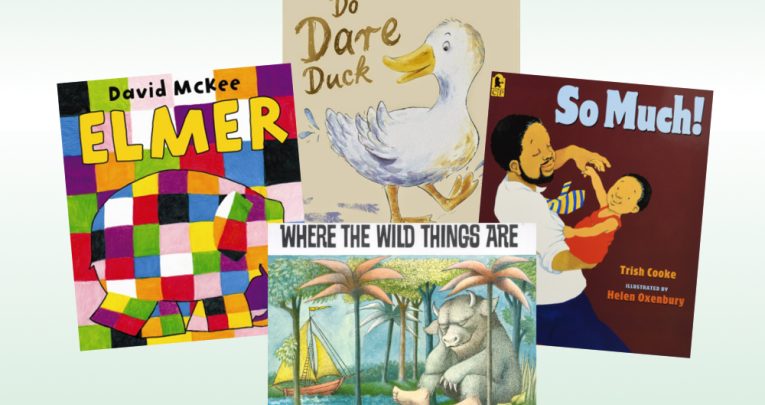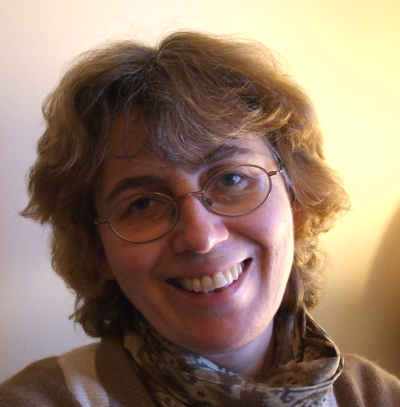12 Early Years Literary Activities for Do Duck Dare, Elmer, So Much and Where the Wild Things Are

Make a monstrous mask, enjoy some Do Dare Duck-based word play, or practise mixing the primary colours to create a patchwork picture worthy of Elmer, says Hilary White…

- by Hilary White
- Former nursery and primary teacher, freelance writer and consultant

12 literary activities from Hilary White to delight your young learners...
DO DARE DUCK
Joyce Dunbar & Jane Massey, Jonathan Cape
1 | Footprints
The endpapers in Do Dare Duck show lots of animal footprints, including the donkey’s hooves, the cockerel’s claws and the dog’s paws. Use them as a starting point for making your own footprint duck pictures with the children. Turn paint footprints into the duck’s body and add cut-out heads, beaks and eyes. Look at pictures of ducks and let the children decide which colours they want to use. When the paint is dry, glue on feathers. Children who dislike getting their feet painty can use hand or wellie prints.
2 | Feeding time
Plan a trip to the park to feed the ducks. Ask the children to help you investigate the best food for ducks, and talk about behaving calmly so that we don’t scare the ducks. Organise as much adult help as possible, and make sure everyone understands the importance of being safe near water. Before the visit, look at illustrations of the duck in Do Dare Duck and identify different features (beak, webbed feet, wings). During the visit, help the children to spot similar features and observe the ducks waddling, swimming, dabbling and quacking.
3 | Dabbling & dawdling
Do Dare Duck is full of interesting alliterative action words beginning with the ‘d’ sound. After you have shared the story with the children, encourage them to try out some of the actions. Start off with straightforward words such as ‘dance’ and move on to more challenging actions such as ‘dazzle’. Talk about the meaning of the words and encourage the children to develop their own ways of acting them out. Come up with alliterative actions for other animals in the story; for example, a ‘tiptoeing’ tortoise, a ‘peeping’ peacock or a ‘hopping’ hare.
WHERE THE WILD THINGS ARE
Maurice Sendak, Red Fox
4 | Bedrooms
Max’s bedroom is the setting for the beginning and ending of Where The Wild Things Are, and a safe space to return to after his adventures. Talk about the picture of Max’s bedroom, and show the children other famous paintings of bedrooms such as Lichtenstein’s Interior with Waterlilies, Van Gogh’s Bedroom in Arles and Carpaccio’s Dream of St Ursula. Encourage the children to compare the paintings with their own bedrooms and look out for similarities and differences. Using wallpaper, fabric scraps and images cut from furniture catalogues, create mixed-media pictures of bedrooms.
5 | A wild rumpus!
Look at the pictures of the Wild Things dancing and encourage the children to think about how a heavy, lumbering monster might move. Introduce words and actions such as ‘stomp’, ‘galumph’ and ‘shuffle’, and practise the movements. Give the children percussion instruments to accompany some of the moves, encouraging them to choose loud instruments such as drums and tambourines. Once the children are confident with their dancing, introduce slow, ponderous music such as Prokofiev’s Montagues and Capulets: Dance of the Knights. With older children, develop a circle or line dance routine.
6 | Monster masks
Maurice Sendak has cleverly created ‘wild things’ with a benign look, in spite of their ‘terrible’ teeth and eyes. Look at the monsters’ faces in Where The Wild Things Are and talk about colours, shapes and features. Working on paper plates, let the children create their own monster masks with cut-out yellow circles for eyes, white triangles for teeth and wool or shredded paper for hair. Once the masks are finished, cut out eyeholes, tie on elastic loops and wear during the ‘Wild Rumpus’ dance (see above).
ELMER
David McKee, Andersen Press
7 | Elmer’s Day
Once the children are familiar with Elmer’s story, focus on the ‘Elmer’s Day’ celebration at the end of the book. Talk about how each elephant has dressed him or herself to look different from the rest, and the fun they have on their parade. Provide a range of dressing-up clothes, including quirky and colourful hats, beads and scarves, and let each child create their own, unique outfit. Have one person dressed in grey to represent Elmer and ask everyone to parade around the setting before sitting down to a celebratory, elephant-themed tea.
8 | Patchwork colours
Identify the colours in Elmer’s patchwork coat and compare them with the plain grey of the other elephants in the herd. Starting with two of the primary colours (red, blue, yellow), show the children how to mix a spoonful of each to make a new colour. Experiment with mixing all three primary colours together, adding black or white to a colour and mixing black and white. Use the paints to create themed patchwork pictures with primary colours, secondary colours (orange, green, purple), pastel colours, dark colours and shades of brown and grey.
9 | Berry tie-dye
Talk about how Elmer rolls in berry juice to disguise his patchwork colours and explain to the children that they too can use berries to change the colour of fabric or paper. Make berry dye by simmering mashed elderberries, blackberries or raspberries in water for 20–30 minutes. Dip white cotton fabric in a solution of one part vinegar to four parts water and use elastic bands to make the fabric into tight bundles. Soak the bundles in the dye and then let the fabric dry out before opening to reveal the beautiful tie-dye patterns.
SO MUCH
Trish Cooke & Helen Oxenbury, Walker
10 | When I was a baby…
Talk about the baby in So Much and explain to the children that they too were once babies. Send a note home asking for the children to bring in a baby photo to share with the group, and prompt the adults in the setting to join in with their own baby photos. Talk to each child about their photo, focusing on how they have changed since babyhood, and scribe their words. Seek parental permission for the photos to be displayed and turn the words and photos into an eye-level frieze.
11 | Feelings
The expressive characters in So Much display a range of different emotions, including happiness, excitement, love, boredom, crossness and confusion. Talk about the events of the story and the characters’ facial expressions and body language. Encourage the children to think about occasions when they have experienced similar feelings and challenge them to act out being happy, excited, cross and sad. Create a set of ‘feelings’ picture cards based on the characters in So Much, and use the cards to help children explore the emotions triggered by day-to-day events in their lives.
12 | A card for aunty
So Much celebrates and explores each family member’s relationship with the baby of the family. Talk to the children about their relationship with extended family members such as aunts, uncles, grandparents and cousins. Focus on the lovely things the children do with their extended family, and help each child to make a ‘thank you’ card for a chosen relative (‘thank you for taking me swimming / making my dinner / giving me shoulder rides’). Encourage the children to choose motifs, colours and patterns to suit the taste of the card’s recipient.
Encourage discussion
Sharing picture books with young children can trigger some interesting conversations. Words and pictures sometimes appear to be contradictory, and children’s lack of experience in reading pictures often leads them to misinterpret what they see. Ironically, this potential for confusion is partly what makes the picture book such a wonderful springboard for learning – as long as you are willing to respond to questions. Make the most of the potential for conversation by planning open-ended sessions, letting the children take the lead, revisiting familiar stories and keeping your groups as small as possible. If you can enable free-flow conversation in this way, you will be rewarded with some rich opportunities to explore misunderstandings – and a fascinating insight into young children’s thought processes.
Hilary White is a former nursery and primary teacher. As an author she has written a number of books and contributed to a range of magazines.










